Did you know? Most motorcycle breakdowns in the spring are caused by issues that start with neglected winter storage. Before you head out for your first ride of the spring riding season, it’s crucial to understand how proper motorcycle maintenance after winter can make or break your upcoming adventures. This guide gives you the essential steps on how to prep motorcycle for spring, so you can enjoy every mile ahead with total confidence and safety.
Startling Fact: Most Motorcycle Breakdowns in Spring Result from Neglected Winter Storage
Spring is when the open road calls to every rider, but it’s also the season when shops see a spike in repairs due to overlooked winter storage issues. Failing to address common post-winter problems not only risks your ride’s performance but could compromise your safety. More than 60% of shops report that the majority of their spring service jobs stem from simple issues like dead motorcycle batteries, stale gas in the gas tank, flat spots on tires from poor positioning, or overlooked brake pad wear. Proper spring motorcycle maintenance is not just about extending your bike’s life—it is about ensuring your personal safety and avoiding avoidable headaches. Starting the season with a thorough maintenance check—from fluids to brake pads and beyond—gives you peace of mind and maximizes the thrill of every spring ride.
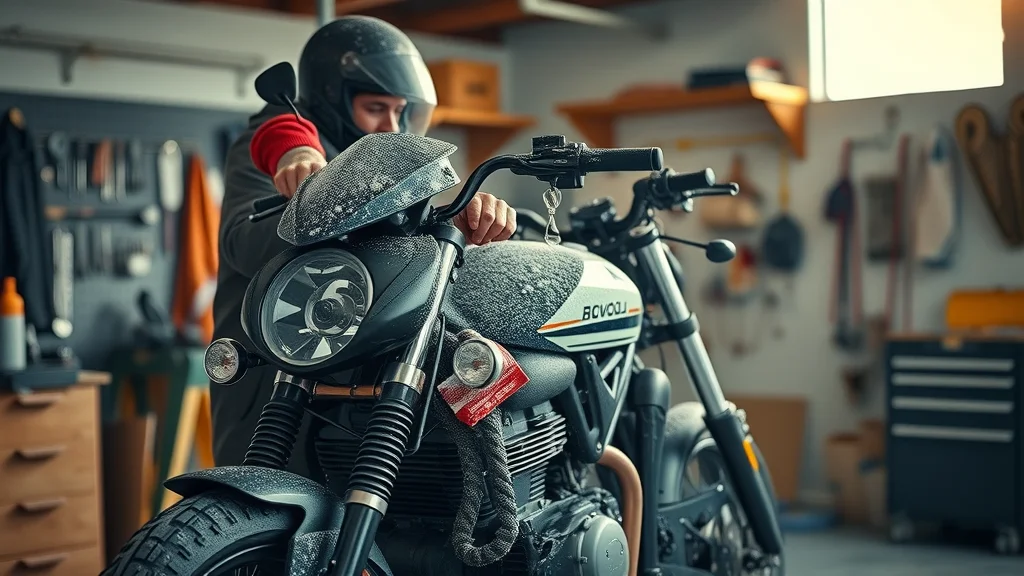
Why Proper Motorcycle Maintenance After Winter Storage is Crucial for a Safe Riding Season
After months in storage, even the best-kept motorcycles require a careful maintenance checklist before returning to the road. Fluids settle or degrade, the brake pads can harden or rust, and your gas tank may have accumulated moisture or old fuel. All these factors increase the risk of mechanical failure, braking inefficiency, or engine trouble during spring riding. In fact, skipping essential steps—like checking the battery, inspecting brake lines, or reviewing your service manual—can leave you stranded or, worse, put you in harm’s way.
When each maintenance check is navigated with care, you’re not just prepping your machine—you’re safeguarding your entire riding season. Routine post-storage maintenance leads to improved responsiveness, better fuel economy, and lower repair costs throughout the year. Make a commitment to thorough motorcycle maintenance and enjoy your spring riding with confidence.
What You'll Learn: Your Complete Guide to How to Prep Motorcycle for Spring
- Understand the must-do motorcycle maintenance checklist for spring
- Gain expert tips for effective maintenance checks from service manuals
- Learn about brake pads, gas tank care, and post-storage inspection
- Find out how to ensure your motorcycle is road-ready for spring riding
- Discover key FAQs and answer PAA questions on prepping motorcycles
Spring Motorcycle Maintenance Checklist: Your Roadmap to a Safe Riding Season
For a truly safe start to your spring riding, follow a thorough maintenance checklist designed for post-winter motorcycle maintenance. Each of these points—including brake pads, the gas tank, and referencing the service manual—ensures your bike is ready to hit the road with nothing left to chance.
| Maintenance Check | Brake Pads | Gas Tank | Service Manual Reference | Action Needed |
|---|---|---|---|---|
| Battery Charge/Test | Check brake pad for movement during test | Inspect for fuel stability | Locate battery care section | Charge or replace battery as needed |
| Fluid Levels (Oil, Coolant, Brake Fluid) | Examine for wear/replace if below spec | Check for rust or deposits | Fluid types and intervals | Change or top-up fluids, schedule oil change |
| Tire Pressure & Tread | Inspect for uneven pad wear | Ensure fuel lines clear | Tire inspection guidelines | Inflate, repair, or replace tires as needed |
| Chain/Sprocket | Check rear brake engagement | N/A | Lubrication points listed | Clean and lubricate chain, adjust slack |
Inspecting Your Motorcycle: Key Maintenance Checks Before Spring Riding
Before the first test ride, investing time in a thorough inspection can prevent minor issues from ballooning into breakdowns. Start by reviewing your motorcycle battery—check the charge and, if necessary, recharge or replace it. Move on to examine all essential fluids. Check your oil, coolant, and brake fluid levels based on your specific service manual instructions, and replace any that appear dirty or have reached their mileage interval.
Next, inspect your tires for tire pressure and look for cracks, flat spots, or excessive wear on the tread. This time of year, neglected tires can mean unsafe handling as soon as the temperatures and speeds increase. Don’t forget to check moving parts—including the drive chain, clutch and throttle cables, and brake lines. Lubricate or adjust as needed according to your manufacturer’s service manual. Following this maintenance checklist, you’re laying the groundwork for safer, trouble-free rides right from the start of the spring riding season.
For riders looking to go even deeper with their seasonal maintenance, exploring additional strategies can make a big difference. You might find it helpful to review the seasonal bike care secrets every rider must know for more tactical tips on keeping your motorcycle in peak condition throughout the year.
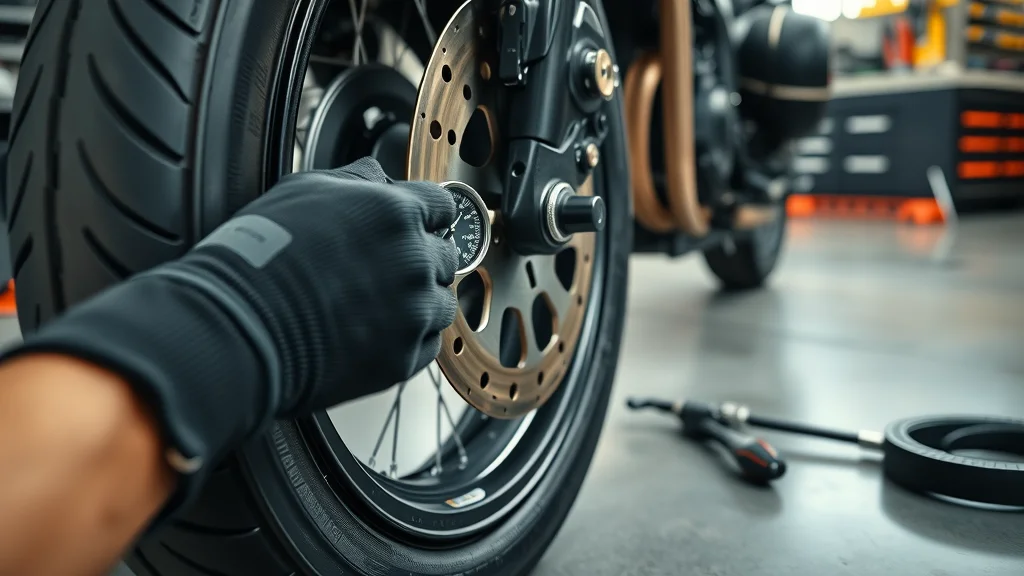
How to Check and Replace Brake Pads for Optimal Motorcycle Maintenance
Properly functioning brake pads are a non-negotiable for motorcycle safety. After being idle through winter storage, your brake pad material can become compromised. Start your inspection by examining both the front and rear brake pads for excessive wear, thinning, or glazing. Many service manuals provide visual thickness indicators—if the pad thickness is at or below the minimum, it's time to replace them. While at it, inspect the brake line or brake lines for any signs of cracking or leaking. Pay close attention to the brake lever response and the engagement of both front and rear brakes during every test ride.
If your brake pads need replacing, follow the step-by-step guide in your service manual. Typically, this involves removing the relevant caliper, extracting the old pad, and carefully inserting a new one—matching both size and type. Reassemble and pump the brake lever to restore hydraulic pressure before your spring test ride. Remember to check brake fluid levels after replacing pads, as worn pads can affect overall system performance. Doing this thoroughly now can significantly reduce the risk of accidents and give you confidence for the whole riding season.
"Ignoring your brake pads after winter can increase your stopping distance by up to 30%, putting you at risk for spring accidents." — Certified Motorcycle Mechanic
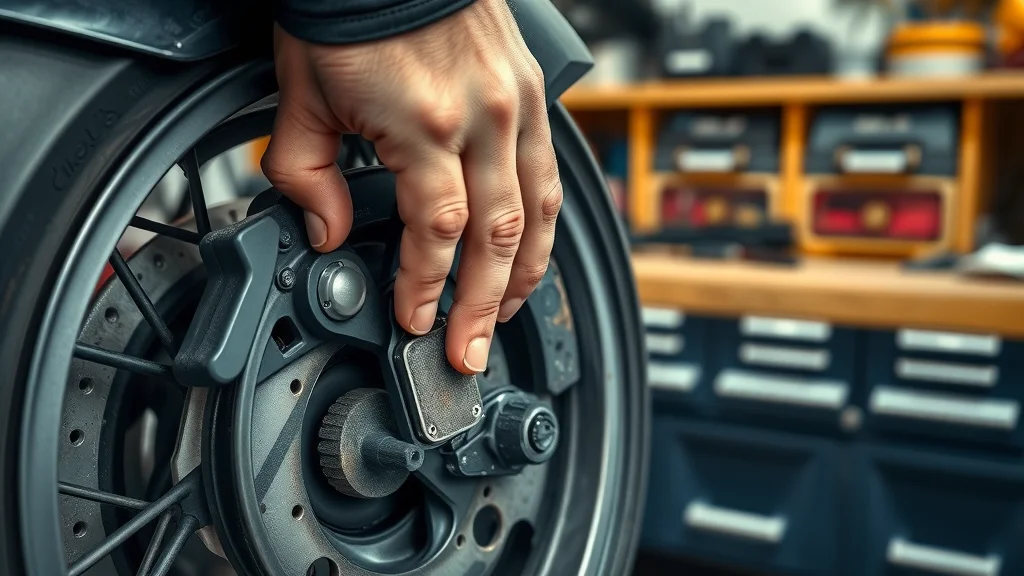
Inspecting the Gas Tank: Preventing Common Post-Winter Problems
Your gas tank, after winter storage, can become a breeding ground for condensation, rust, or stale fuel. Open the fuel tank cap and visually inspect for any signs of moisture, rust spots, or residue. The presence of old fuel—especially if you didn’t use a stabilizer before storage—can clog your fuel filter and result in poor running or engine hesitation. If the fuel smells sour, drain and refill with fresh gasoline. This step, along with inspecting the tank’s interior, will help prevent unwanted engine problems across the spring.
Don’t forget to check the fuel lines for any cracks or leaks, as rubber and plastic can degrade over time in fluctuating temperatures. A quick verification of your service manual will highlight your specific model’s procedure for proper gas tank inspection, care, and cleaning. Addressing gas tank issues now ensures smoother throttle response, efficient fuel use, and a longer engine life during the coming riding season.

Referencing Your Service Manual: Step-by-Step Maintenance Checklist for Spring
Your motorcycle’s service manual is the single most authoritative guide for model-specific maintenance. Referencing the correct sections during your spring prep ensures each maintenance check is performed to factory specs. The manual will list exact fluid capacities, recommended types and brands of consumables (like oil and air filter), step-by-step instructions for adjusting clutch and throttle cables, and even the torque specs for critical fasteners. Skipping this resource often leads to costly errors or missed problems that only reveal themselves at speed. By following the service manual closely, you’re setting yourself up for a safe and reliable spring riding experience, and you’ll be better prepared to address maintenance concerns swiftly in the future, too.
Create a habit each season of cross-referencing your inspection and maintenance checklist with your manual. If you can’t find your physical copy, most manufacturers provide PDF versions for download—keeping one on your phone ensures you’ll always have expert guidance at hand, even while working in the garage.
Addressing Issues After Winter Storage: Prepare for Spring Riding
Some motorcycles develop issues during winter storage that aren’t obvious until a thorough maintenance check or the first test ride. Common concerns include dried-out fluid seals, weakened brake pads, corroded drive chain, or sticky controls. Addressing these problems—rather than ignoring them—will prevent small annoyances from developing into major failures during active spring riding.
Following up with corrective maintenance, such as changing the oil, replacing the air filter or fuel filter, and tightening bolts, is time well spent. Even if you’re pressed for time, prioritize inspecting the front and rear brake systems, checking tire condition, and changing any fluids that look even slightly compromised. Your peace of mind and safety are worth the extra effort before you hit the road for your first ride.
Fluids, Filters, and Tires: Start Your Maintenance Check Strong
Begin your spring refresh with the essentials: fluids, filters, and tires. Drain and refill engine oil if it wasn’t changed before winter, and inspect coolant and brake fluid for clarity or contaminants. Check your air filter for signs of dirt or rodent nests—a clogged air or fuel filter will zap your performance before your first test ride. Tire condition is another priority: ensure pressures are at manufacturer spec and look for signs of dry rot, uneven tread wear, or sidewall cracks. Replace tires at the first hint of unsafe tread, as spring riding often means damp or debris-covered roads, and compromised tires directly affect your stopping distance and handling.
If you recently changed fluids based on mileage or before storage, visually inspect their condition anyway; sometimes older fluids degrade simply from sitting in the cold, especially brake fluid and coolant, which can absorb moisture over time. A few proactive changes now save major hassle and expense later this riding season.
Safety Systems: From Brake Pads to Lights — Don’t Miss a Step
Safety checks go hand-in-hand with springtime motorcycle maintenance. Beyond the critical inspection of brake pads and lines, test the brake lever for smooth operation, and see that all bulbs (headlights, taillights, indicators) light up bright and clear. Sometimes, bulbs or fuses can fail over a long winter, and a non-functioning light is an easy ticket—or worse, a risk you don’t want to take. If your service manual lists a checklist, follow each point dutifully, and do not ignore the clutch and throttle responsiveness—hesitation or stiffness here can signal cables needing lubrication or replacement.
Take a lap around your bike, reviewing every visible nut, fastener, and cover, ensuring nothing’s come loose with time. Confirm mirrors are tight and properly adjusted. Only then can you feel confident your safety systems are 100% reliable for when you hit the road after winter.
Test Ride: Confirming Your Motorcycle Is Ready for Spring Riding
The culminating step of your how to prep motorcycle for spring routine is the test ride. This is where you observe the results of your hard work in real road conditions and catch anything your garage inspection might have missed. Choose an open, familiar route—preferably with a variety of speeds and gentle stops. Pay close attention to throttle response, braking sharpness, steering feel, vibration, and any unusual noises. Evaluate performance, making extra mental notes about the clutch, throttle smoothness, and how the front and rear brakes respond when coming to a full stop.
Don’t rush this first test. Give each system a few tries. If you notice hesitation, odd sounds, vibrations, or the feel of the controls isn’t quite right, take the bike back to the garage and repeat your inspection of the affected systems. This rigorous approach can uncover hidden issues with brake pads, tire pressure, or lingering debris in the gas tank or fuel system. Only after passing this real-world test can you confidently launch into a full riding season of spring riding.

Checklist for Your First Spring Test Ride & Performance Evaluation
- Begin with a gentle warm-up ride at low speed
- Check engine response and idle for smoothness
- Test throttle and brake lever feel separately
- Apply front and rear brakes at several speeds
- Listen for knocks or rattles from suspension and engine
- Verify indicator and brake light visibility in sunlight
- Inspect tires again after ride for newly visible wear
Diagnosing Unusual Noises or Handling Issues After Maintenance
Not all issues become obvious in static inspection—some only reveal themselves during or after your test ride. Listen carefully for new or persistent noises: metallic scraping may point to poorly fitted brake pads or debris in the pads themselves; clunks or wobbles could indicate loose fasteners or play in the suspension. If you notice a mushy or unresponsive brake lever, immediately stop to check fluid levels and search for possible air leaks along the brake line.
Handling tweaks are equally important—if the bike feels heavy in corners or slow to respond, tire issues, incorrect pressures, or feathered tread could be the culprit. Vibration at speed may mean the drive chain needs tensioning, or the wheels should be balanced. Return to your service manual for troubleshooting guides, and always err on the side of caution: address any anomaly you discover before committing to daily spring rides. This approach ensures your safety and optimal performance throughout the season.
People Also Ask: Key Questions on How to Prep Motorcycle for Spring
What is the 2 4 12 second rule on a motorcycle?
The 2-4-12 second rule is a vital principle in motorcycle safety. It means you should scan 2 seconds ahead for immediate risks, 4 seconds for possible threats in your path, and 12 seconds to assess the broader road environment. This mental checklist helps you anticipate dangers, improve your response time, and keep you safer during spring riding, especially when roads may have changed after the winter months.
How to prep your bike for spring?
To properly prep your bike for spring, follow a comprehensive motorcycle maintenance checklist: charge or replace your battery, check your oil and coolant, inspect and replace brake pads as needed, review your gas tank for old or tainted fuel, ensure correct tire pressure and tread depth, lubricate chain and cables, and review your service manual for any model-specific steps. After thorough checks, perform a gentle test ride to confirm all systems operate safely and smoothly.
What is rule 5 motorcycle?
“Rule 5” in the motorcycle community commonly refers to the tongue-in-cheek advice: “Harden the [rider] up!” However, for practical spring prep, always prioritize your maintenance check—don’t cut corners on safety or inspection protocols. Trust your service manual for guidelines, and take spring maintenance seriously for the best and safest riding season possible.
How cold does 40 degrees feel on a motorcycle?
At 40°F while riding a motorcycle, wind chill makes it feel significantly colder—often like the low 30s or even upper 20s (Fahrenheit). Without proper gear and preparation, hypothermia and numbness can set in quickly, especially at highway speeds. For spring riding, layer appropriately, wear windproof gloves, and make sure your motorcycle maintenance is done to avoid any breakdowns or roadside stops in chilly weather.
FAQs on How to Prep Motorcycle for Spring
-
Do I need to change my motorcycle oil every spring?
Yes. Even if you didn’t ride during winter, condensation can collect in your engine, making a fresh oil change essential for engine protection and longevity. -
Is tire replacement necessary or just inflation?
Check tire condition first—if there’s cracking, flat spots, or excessive wear, replace immediately instead of just inflating. Safe tire pressure is crucial, but the tire’s physical integrity matters most. -
Should I consult my service manual for every maintenance check?
Absolutely. Your service manual ensures each task is done correctly and identifies specs unique to your make and model—never skip it. -
Can I skip the battery check if it was new last year?
No. Even a new battery can drain or sulfate in winter storage. Always check charge levels and connections before spring riding. -
What’s the quickest maintenance checklist for experienced riders?
Battery charge, fresh oil and coolant, brake pad and tire inspection, lights check, chain lubrication, and a short test ride before hitting the open road.
Key Takeaways: How to Prep Motorcycle for Spring and Enjoy a Safe Riding Season
- A thorough spring maintenance check reduces breakdown risk and maximizes safety
- Following a detailed maintenance checklist—inclusive of brake pads, gas tank, and reference to service manual—ensures peak performance for the riding season
- Don’t overlook battery, fluids, and tire health after winter storage
- Always test ride carefully before regular spring riding
Ready to Hit the Road? Ensure Professional Motorcycle Maintenance By Calling Nasty Performance Motorcycle Shop Today: 847-458-4858
If you want peace of mind and expert service for the ultimate spring riding experience, call Nasty Performance Motorcycle Shop at 847-458-4858. Trust the pros to prepare your bike for every adventure!
Conclusion: Secure a Head Start for Spring Riding Season with Thorough Motorcycle Maintenance
By following these how to prep motorcycle for spring steps, you set yourself up for a safe, exhilarating, and worry-free riding season. Make maintenance your first ride—every spring.
As you continue to refine your maintenance routine and seek out new ways to protect your investment, consider broadening your knowledge with expert advice on year-round care. For a deeper dive into strategies that keep your motorcycle performing at its best in every season, explore the comprehensive insights in Seasonal Bike Care Secrets Every Rider Must Know. This resource is packed with advanced tips and proven techniques to help you ride with confidence, no matter what the calendar says.
 Add Row
Add Row  Add
Add 
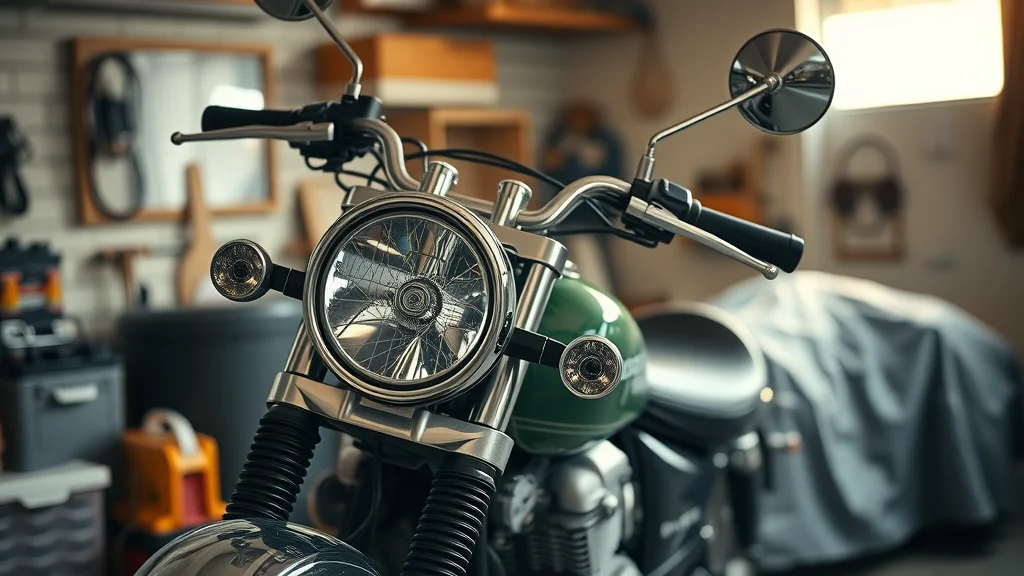
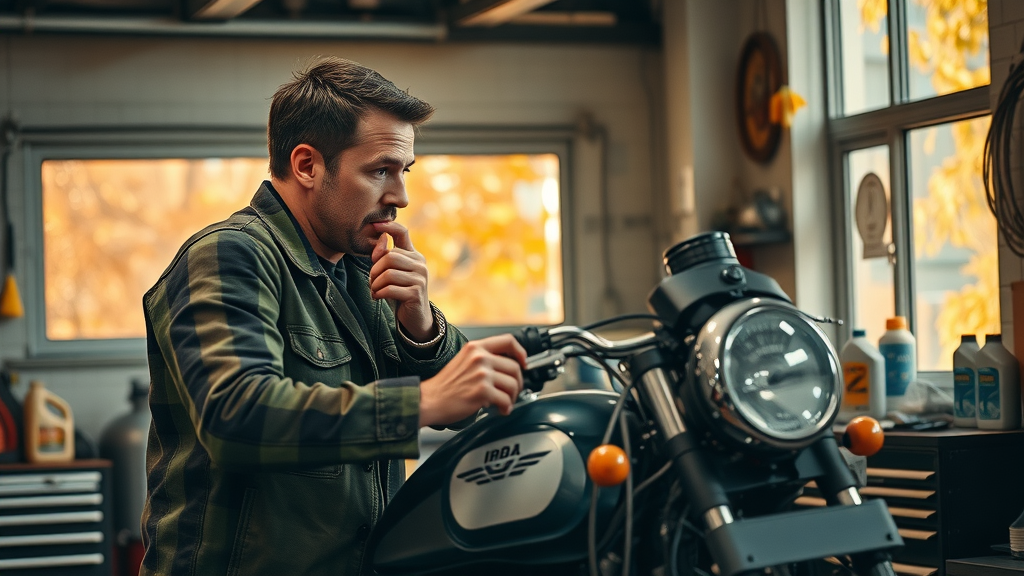

Write A Comment